Reverse Sear Tri Tip
On August 14, 2023
This post may contain affiliate links. Please read our disclosure policy.
This reverse sear tri tip is cooked to perfect medium rare and is full of flavor. Start this guy low and slow on the smoker and finish up with a hot sear for the most tender and delicious tri tip ever.
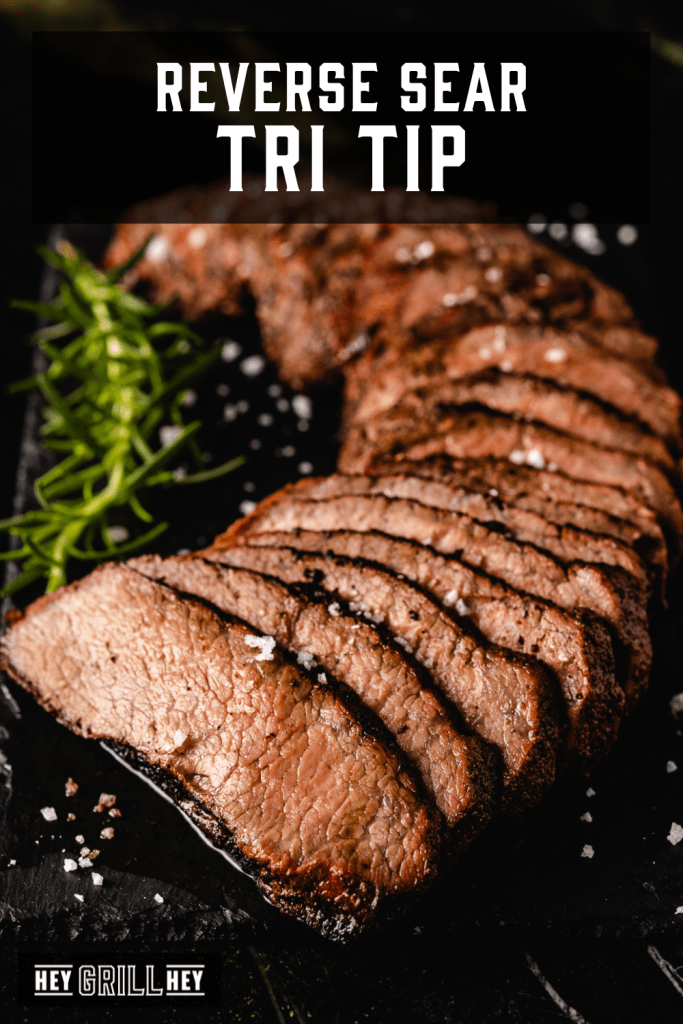
Reverse Sear Tri Tip
This reverse seared tri tip is my favorite method for cooking my favorite cut of beef. Tri tip is rich, beefy, and incredibly flavorful, and the reverse sear cooking method produces a final product that maximizes the tenderness of the cut itself.
If you follow this recipe, you’ll have a tri tip with perfect medium-rare doneness inside and a gorgeous crispy crust on the outside. It’s a great cut of meat to serve at a weekend BBQ or for family dinner on a Sunday night.
How to Reverse Sear Tri Tip
Here’s how to do it reverse sear tri tip. For a full, printable instruction card with ingredients and detailed instructions, scroll to the bottom of this post.
- Preheat. Fire up the grill to 225 degrees F. You’re going to be cooking this tri tip over indirect heat, so be sure to get your preferred grill going with this in mind. Also, go with a strong wood for this meat. Oak or hickory will taste amazing.
- Season. Give this roast a liberally sprinkling of Hey Grill Hey Beef Rub. You can purchase this rub from the Hey Grill Hey Store and have it shipped directly to your house. If you don’t have any Beef Rub on hand, you can use equal parts salt, pepper, and garlic powder.
- Smoke. Cook the meat over indirect heat for around 1 1/2 hours, or until the meat comes within 5-10 degrees of your final target temperature.
- Sear. Once the meat is nearing this 5-10 degree range, preheat a cast iron skillet over high/direct heat. You want this skillet nice and hot for the sear. Place the meat on the preheated skillet and sear for 2-3 minutes. Flip, and sear for another 2-3 minutes on the other side. Use a thermometer to gauge the temperature as the meat sears and remove it when it hits your goal temperature. I highly recommend eating tri tip cooked to medium rare.
- Enjoy. Remove the roast from the skillet to a cutting board. Rest for around 10 minutes. Next, slice up the tri tip roast into even portions and serve to your friends or family.
How Long to Reverse Sear Tri Tip
It takes around 1.5-2 hours to reverse sear tri tip. Once the meat is seasoned, slow smoke it until it is within 5-10 degrees of your final target temperature. Need a refresher on temperatures for beef and steak? Check out my post for Internal Temperatures for Meat.
After the steak has been slow smoked, sear it in a cast iron skillet for 2-3 minutes per side. I also like to let my tri tip rest for 10-15 minutes before slicing and serving.
Tips for Reverse Seared Tri Tip
Here are some tips for making reverse seared tri tip.
- Use a thermometer. Times on recipes are great guidelines, but every cut of meat and every grill is a little bit different. Using a high-quality instant-read thermometer ensures that you’re not guessing on internal doneness.
- Get a cast iron skillet. If you don’t have one yet, it’s time to make the investment. Especially if you plan on cooking outdoors regularly. Cast iron is the ultimate in versatility, going from the stovetop to the grill to the serving table. The sear step is made even more delicious by using a skillet to get a great sear while adding in extra flavor from the butter and garlic in the pan.
- Check the grade of your meat. You want a tri tip that is well-marbled (meaning lots of flecks of white fat in the muscles). Fat means flavor and in a tri tip, it also means tenderness. Prime grade typically has the highest amount of fat, followed by choice, and then select.
More Tri Tip Recipes
There are so many amazing ways to cook tri tip. And each way comes off the grill grates with its own amazing, unique flavor. Try out these other methods for cooking tri tip on your patio with these popular recipes below!
Reverse Sear Tri Tip Recipe
Here’s hoping this reverse sear tri tip made for an incredible dinner! It’s hard to pass up great food that is fast and easy to make. Let us know what you thought of this recipe in the comments below!
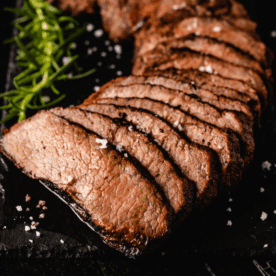
Reverse Sear Tri Tip
Ingredients
- 1 2-3 pound tri tip roast fat cap and silverskin removed
- 2 Tablespoons Hey Grill Hey Beef Rub or equal parts salt, pepper, and garlic powder
- 3 Tablespoons salted butter
- 3 garlic peeled and lightly smashed
- 1 sprig fresh rosemary
Instructions
- Preheat. Preheat the smoker or grill. Preheat your smoker or grill to 225 degrees F for indirect cooking. If smoking, I like to use a strong flavored hardwood like oak or hickory.
- Season the meat. Season the tri tip on all sides with the Beef Seasoning or equal parts salt, pepper, or garlic powder. Lightly press the seasoning into the meat.
- Grill. Place the tri tip directly on the grill grates of your smoker. Close the lid and cook until the internal temperature is within 5-10 degrees of your target final temperature (115 degrees F for a rare roast, 125 for a medium rare roast, 135 for a medium roast, 145 for a medium well roast, or 150 for a well done roast). Tri tip is best served medium rare and takes approximately 1.5 hours to reach 125 degrees F internal temperature.
- Preheat the skillet. When your tri tip is near the correct internal temperature, preheat a cast iron skillet over high heat. Remove your tri tip from the smoker.
- Sear the tri tip. Put 2-3 tablespoons of butter into the cast iron skillet and let it melt. Drop in the sprig of rosemary and crushed garlic cloves, then place the tri tip into the sizzling butter. Sear the tri tip for 2-3 minutes per side, spooning the garlic butter and rosemary over the steak as it cooks.
- Rest, slice, and serve. Pull your roast out of the pan and move onto a cutting board. Allow the roast to rest for 15 minutes before slicing against the grain and serving. The grain changes in a tri tip, so I always start at the smallest point end and angle my knife as needed to keep my slices going against the grain.
Nutrition
Nutrition information is automatically calculated, so should only be used as an approximation.
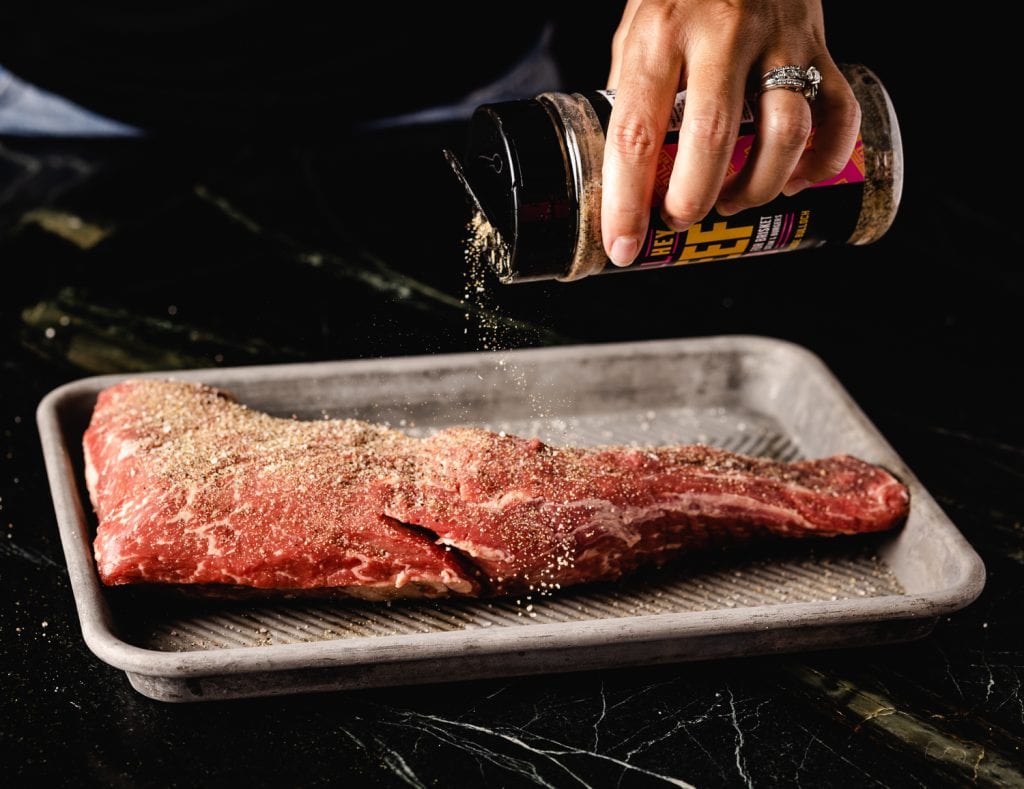
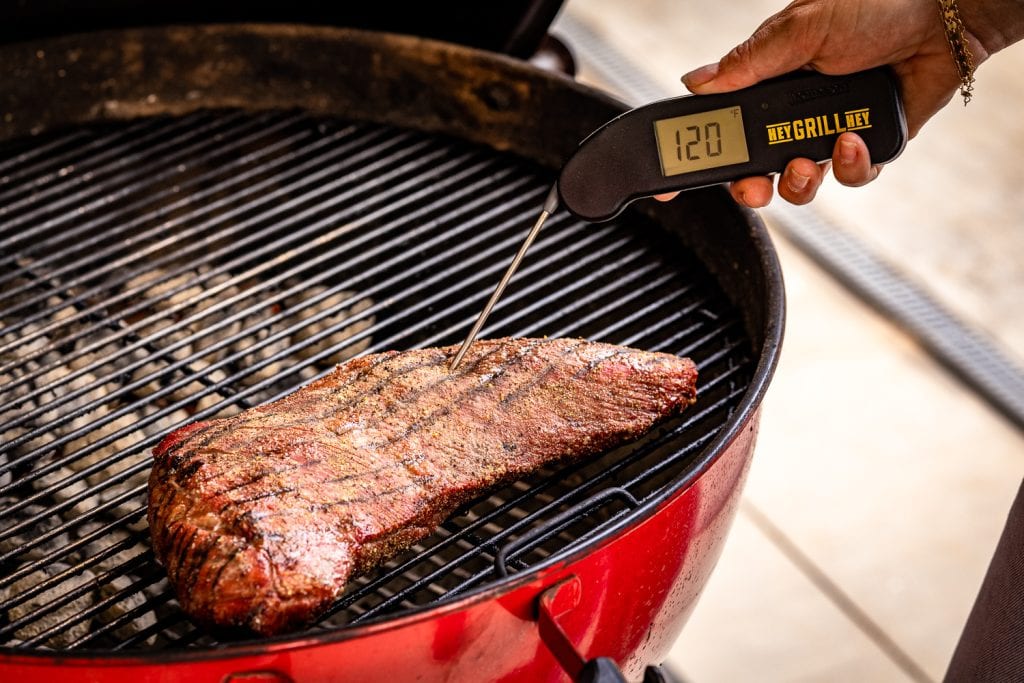

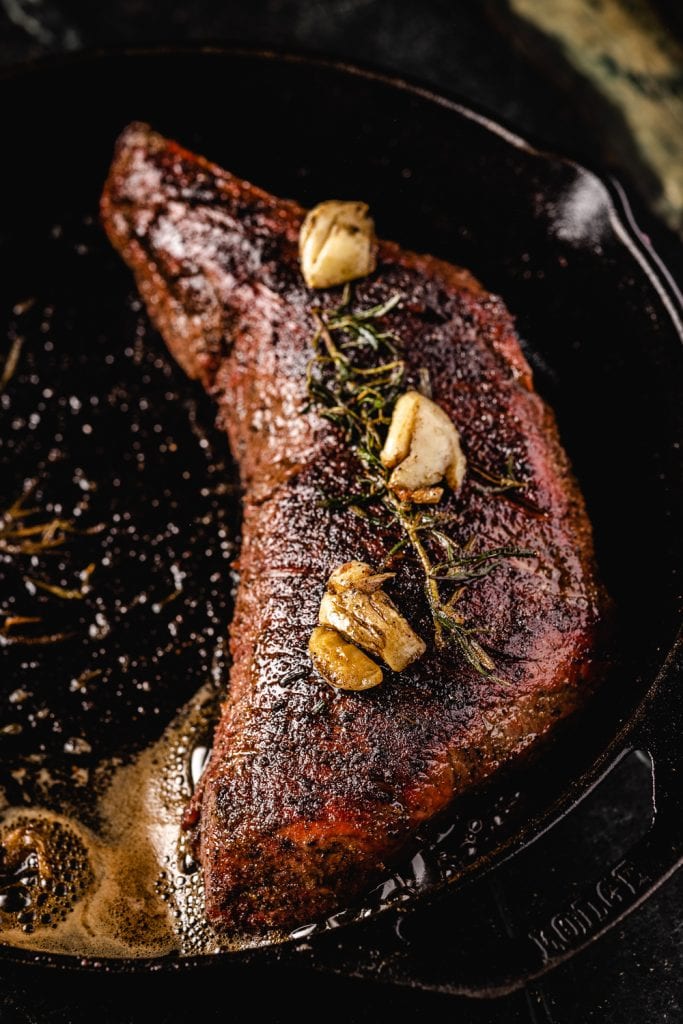

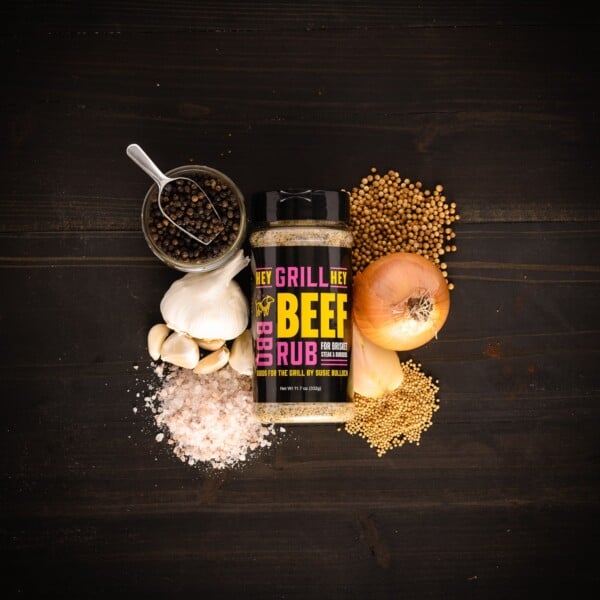

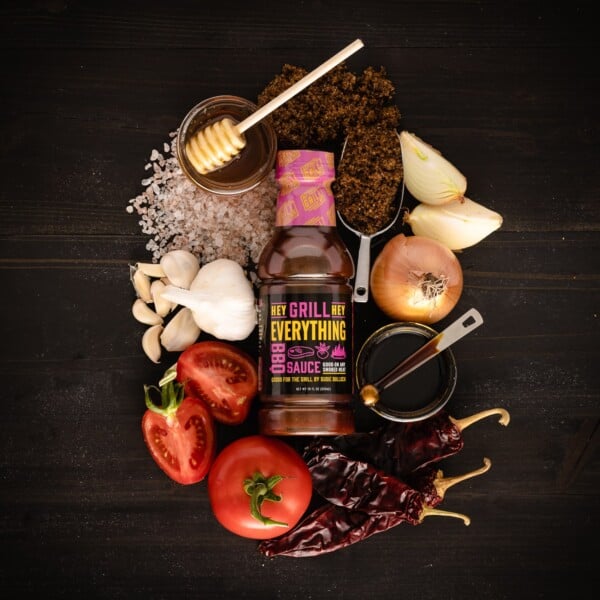


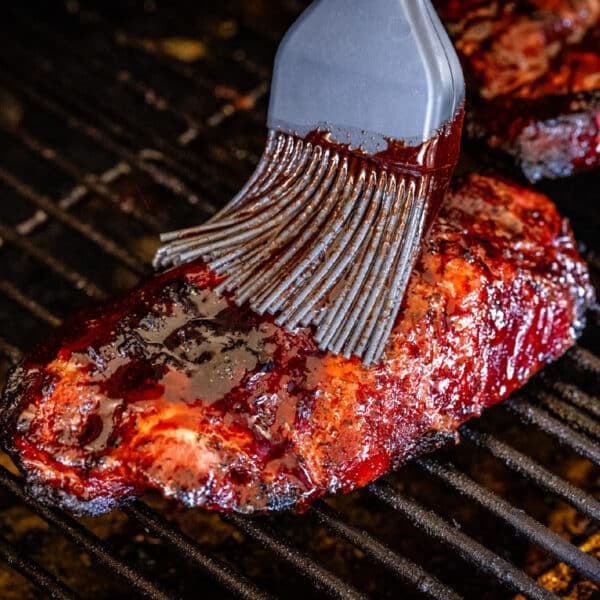








trying this on the pellet smoker soon
I have tried several of your ideas from you tube..always so easy to follow instructions and turns out awesome..I really appreciate what you do …